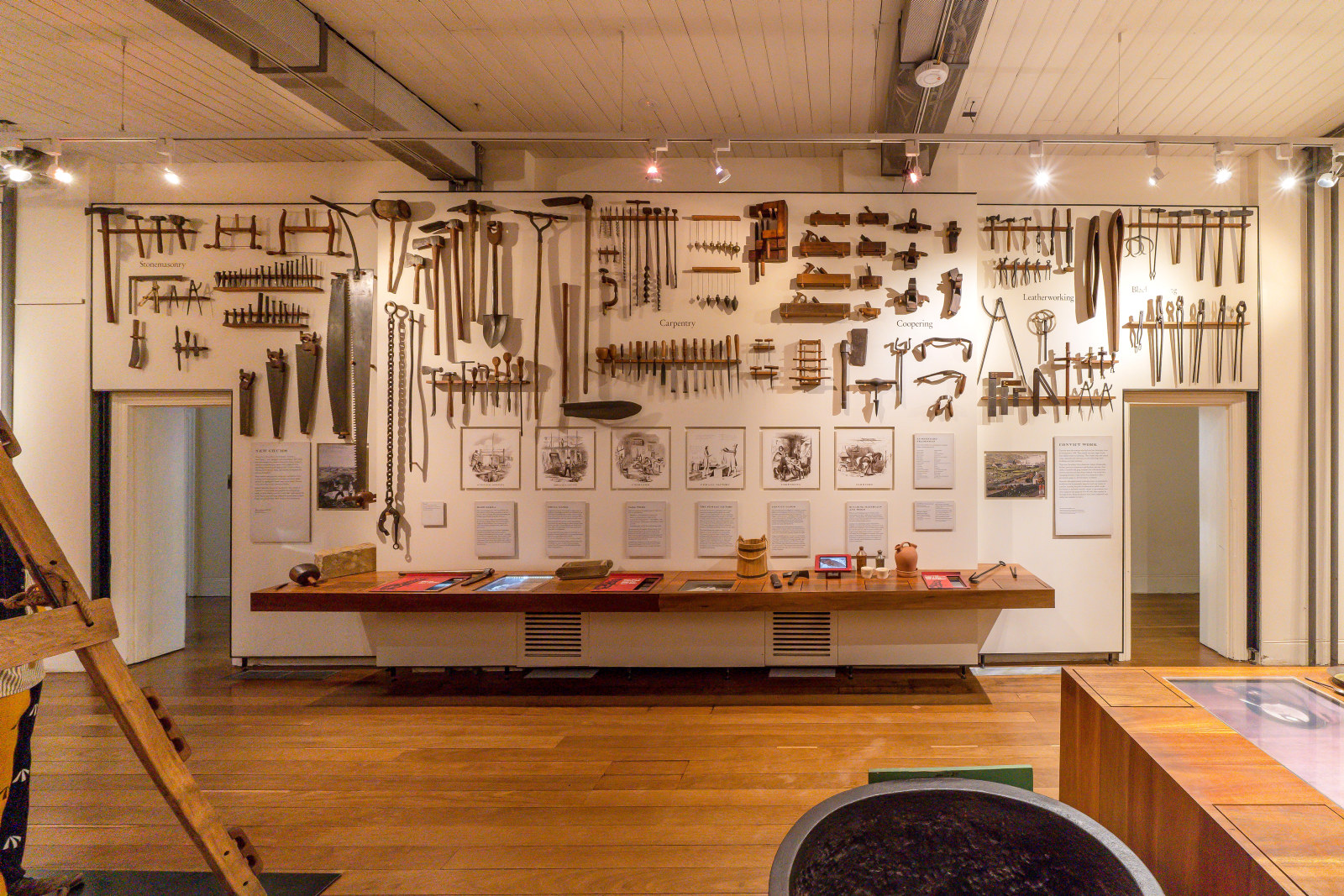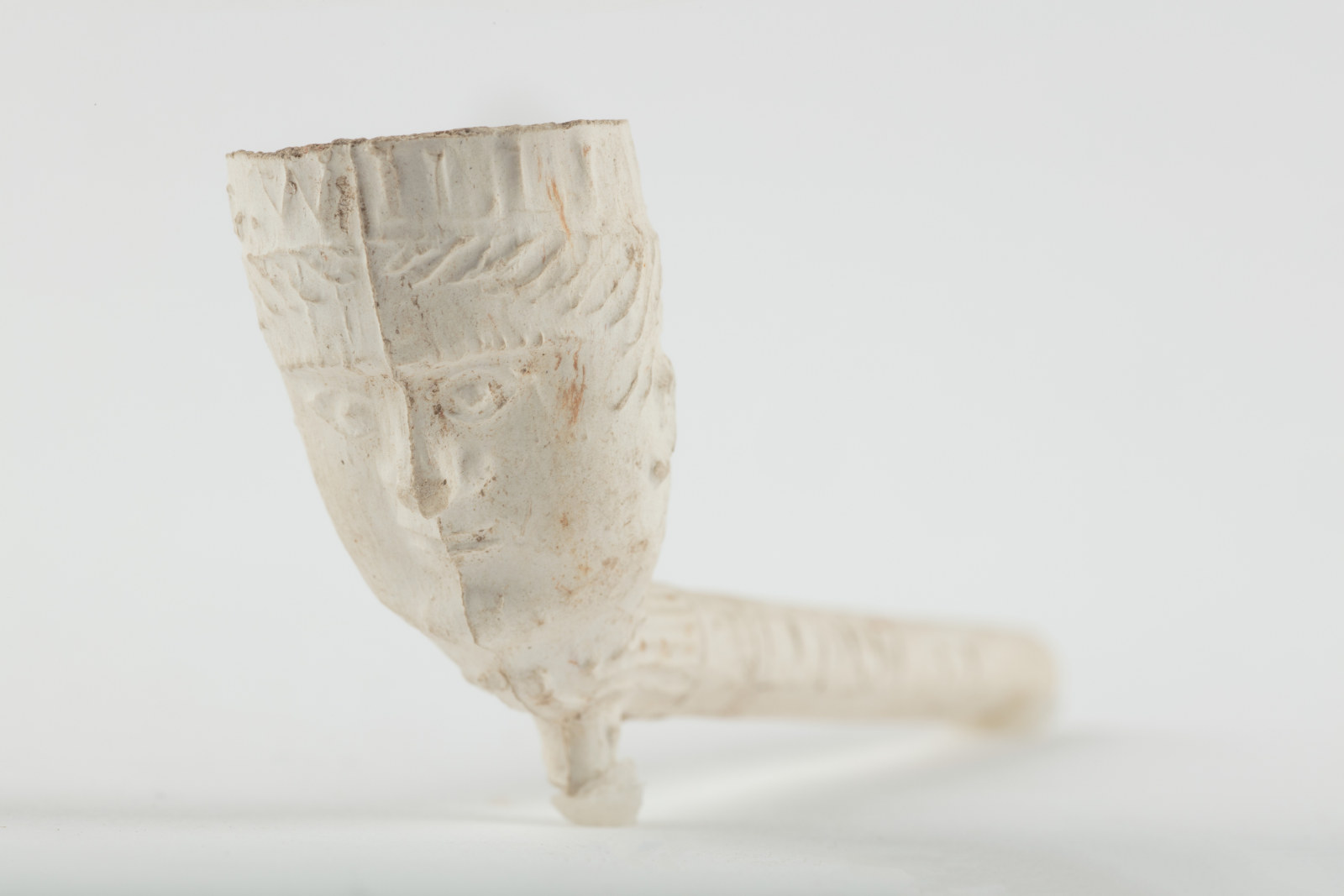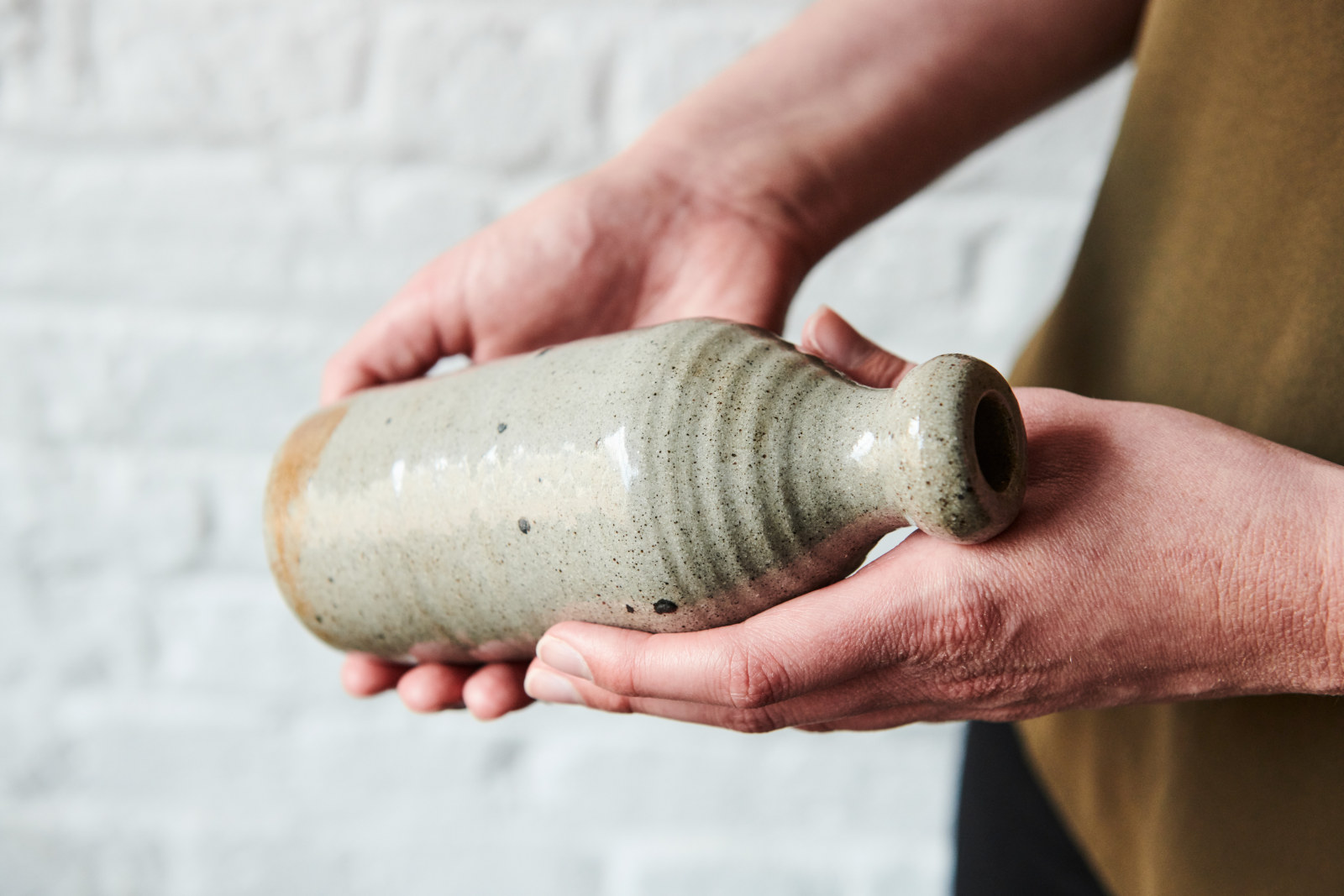Clay tobacco pipes, repaired
1819–1848
Known as steamers to the convicts, these tobacco pipes have been repaired with resin and twine where their fragile stems broke, suggesting that their owners couldn’t afford to buy new pipes to replace them. There were 1500 fragments or complete convict-era clay tobacco pipes recovered by archaeologists from underfloor and underground areas of Hyde Park Barracks. The small size and shape of the bowls of these pipes was typical of those made in the early nineteenth century, when convicts lived at the Barracks. Also, they were found among other convict-era objects, which further confirms their use by convicts.
Many convicts enjoyed smoking as a welcome relief from the brutality and drudgery of convict life. Tobacco, which convicts called weed, was not part of their rations but was an important black market commodity, that they could buy with the few coins they earned by working on Saturday afternoons, by gambling, or by selling stolen goods. Pipes were also available to buy at the pubs and markets, but not all convicts had coins to spare, so it’s not surprising that the convict owners of these pipes valued them enough to repair them.
Published on
Related

Convict Sydney
Objects
These convict-era objects and archaeological artefacts found at Hyde Park Barracks and The Mint (Rum Hospital) are among the rarest and most personal artefacts to have survived from Australia’s early convict period

Up in smoke: clay tobacco pipes
From the earliest days of the colony, Sydney-siders smoked them, broke them, and discarded them into drains, rubbish piles, work sites and hidden cracks and crevices of buildings

Learning resources
Explore our range of online resources designed by teachers to support student learning in the classroom or at home